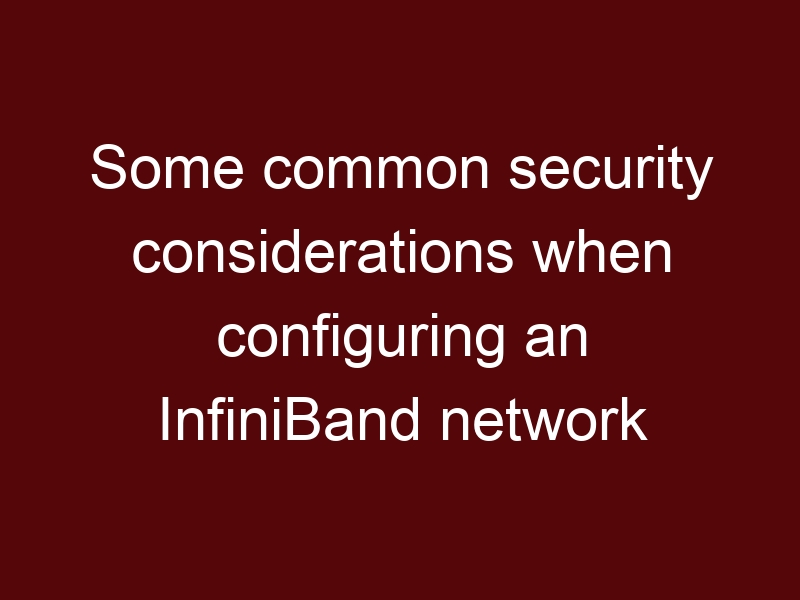When configuring an InfiniBand network, it’s important to prioritize security to protect sensitive data, prevent unauthorized access, and ensure the integrity of network communication. Here are some common security considerations to keep in mind:
- Access Control:
Define and implement access control policies to restrict which devices are allowed to join the InfiniBand subnet. Use Subnet Manager (SM) settings, firewalls, and Access Control Lists (ACLs) to control device participation. - Secure Subnet Manager (SSM) Mode:
Consider using SSM mode for enhanced security. SSM requires mutual authentication between devices and the SM before joining the subnet, preventing unauthorized devices from accessing the network. - Link Encryption:
If sensitive data is being transferred, use link encryption to encrypt data as it travels over the InfiniBand links. This prevents eavesdropping and unauthorized data interception. - Certificate-Based Authentication:
Implement certificate-based authentication to ensure that devices are verified and authenticated before participating in network communication. - Virtual LANs (VLs):
Use VLs to logically segment the network, isolating different groups of devices or applications. This provides a level of isolation and security by keeping traffic separate. - Firewalls and ACLs:
Configure firewalls and ACLs on switches to control communication between devices and enforce security policies. This prevents unauthorized communication and restricts traffic flows. - Key Management:
Implement strong key management practices for encryption keys used in the network. Securely generate, distribute, and rotate encryption keys to prevent unauthorized access. - Physical Security:
Physically secure network equipment, including cables, switches, and HCAs, to prevent unauthorized access. Use cable locks, secure cabinets, and other physical security measures. - Firmware and Software Updates:
Regularly update firmware, drivers, and software for InfiniBand devices to address security vulnerabilities and apply the latest security patches. - Intrusion Detection and Prevention:
Deploy intrusion detection and prevention systems to monitor network traffic for suspicious activities and unauthorized access attempts. - Network Segmentation:
Consider segmenting the network into different security zones based on the sensitivity of the data and the requirements of different applications. - Centralized Authentication:
Integrate InfiniBand network authentication with centralized authentication systems (e.g., LDAP, Active Directory) to ensure consistent and secure user/device authentication. - Logging and Monitoring:
Set up logging and monitoring mechanisms to track network activities, detect anomalies, and respond to security incidents promptly. - Vendor Security Guidelines:
Follow the security recommendations provided by InfiniBand hardware and software vendors to ensure that you’re implementing best practices. - User Education:
Educate users about network security practices, such as avoiding sharing credentials and being cautious about connecting to untrusted devices. - Regular Audits and Assessments:
Conduct regular security audits and assessments to identify vulnerabilities and weaknesses in the network configuration and address them promptly.
By considering these security considerations and implementing appropriate security measures, you can create a more secure InfiniBand network that safeguards sensitive data and ensures the integrity and confidentiality of network communication.





